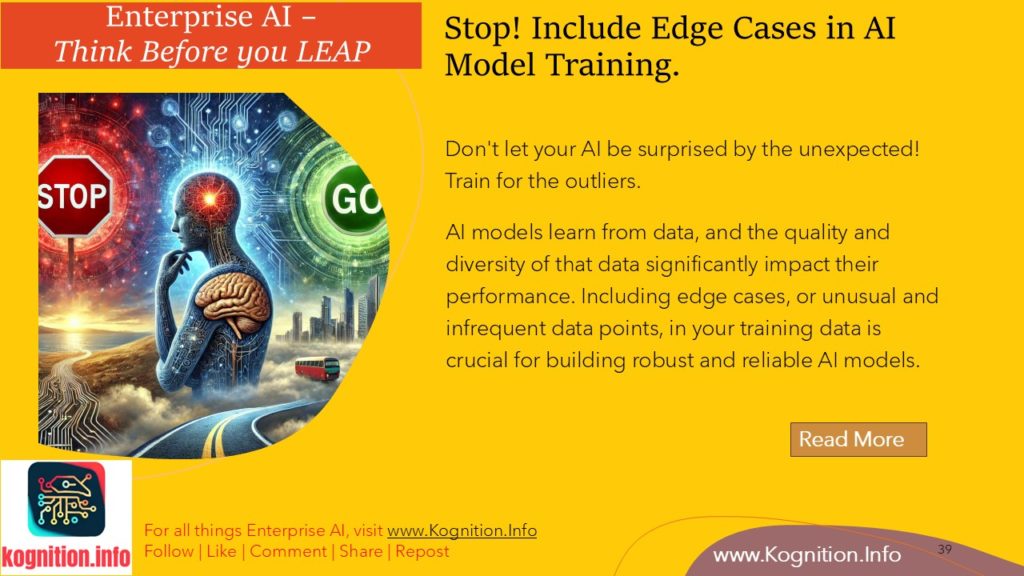
Stop! Include Edge Cases in AI Model Training.
Don’t let your AI be surprised by the unexpected! Train for the outliers.
AI models learn from data, and the quality and diversity of that data significantly impact their performance. Including edge cases, or unusual and infrequent data points, in your training data is crucial for building robust and reliable AI models.
- Real-World Representation: Edge cases represent the unexpected and unusual scenarios that can occur in the real world. Including them in your training data helps your AI models generalize better and handle unforeseen circumstances.
- Improved Robustness: AI models trained only on common data patterns may fail when encountering outliers. Edge cases help build more robust models that can handle diverse inputs and unexpected situations.
- Reduced Bias: Edge cases can help identify and mitigate potential biases in your AI models. By including data that represents diverse perspectives and scenarios, you can reduce the risk of unfair or discriminatory outcomes.
- Enhanced Accuracy: Including edge cases can improve the overall accuracy of your AI models. By learning from a wider range of data, your models can make more accurate predictions and decisions.
- Data Augmentation: If real-world edge cases are scarce, consider using data augmentation techniques to synthetically generate edge cases and expand your training data set.
Remember! Edge cases are not just outliers; they are valuable data points that can significantly improve the robustness, accuracy, and fairness of your AI models.
What’s Next: Analyze your training data for potential edge cases. If necessary, collect more data or use data augmentation techniques to ensure your AI models are trained on a diverse and representative data set.
For all things, please visit Kognition.info – Enterprise AI – Stop and Go.
